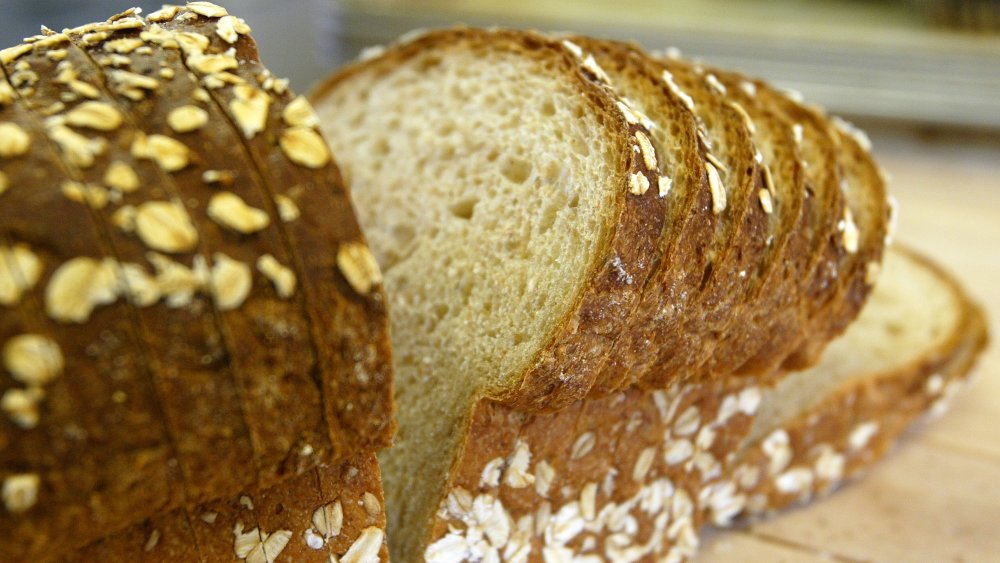Wheat Bread Isn't As Healthy As You Think. Here's Why
Historically, whole grains have been the subject of plenty of misunderstandings. There's also confusion between terms like "wheat," "whole-wheat," "whole-grain," "multigrain," "sprouted grain," and numerous other bread-related labeling terms that leave many supermarket shoppers scratching their heads (via Real Simple). But one misunderstanding that still persists today — that wheat bread (in whatever form) is healthier than white bread — is a myth that was, surprisingly, debunked years ago.
First, a quick grain-anatomy lesson: The Oldways Whole Grains Council explains that each kernel has three edible parts — the outer skin (bran), the embryo (germ), and the largest inner part, the endosperm. According to Bon Appétit, in the making of both white and wheat breads, flour is made by separating out the endosperm from the bran and germ. The difference is that, for white breads, only the endosperm is used, while for wheat breads, the bran and germ are added back in (which lends wheat bread its darker hue).
Therefore, as Kitchn reports, consumers and experts alike assumed for decades that the wheat version of bread was healthier, since the bran and germ offer up extra vitamins and fiber that are absent in white breads.
Wheat bread's health claims are questioned
In 2017, after food scientist Nathan Myhrvold reviewed 50-plus years of research, he proclaimed in his book Modernist Bread that, in essence, whole-wheat bread is no healthier than other types — and, in fact, the contrary might even be true.
While Myhrvold admits that certain vitamins (such as manganese, phosphorus, and selenium — which humans typically are not deficient in) are more prevalent in wheat varieties, other vitamins found in bran (like zinc, iron, and calcium) are not absorbed by the human body. In fact, "a compound in bran called phytates can actually bind to some of the potentially beneficial minerals to block absorption," a phenomenon called "the antinutrient effect."
Furthermore, while fiber is a beneficial nutrient overall — helping prevent blood-sugar spikes and creating a feeling of fullness — Myhrvold's studies found that the amount of fiber in whole-wheat bread isn't significant enough to make it a substantially better choice than white bread (via Social Gazette).
Additional issues with wheat bread
The true health factor of wheat bread can also come into question when looking at various manufacturers' slippery labeling practices. According to Forbes, the generic term "wheat" doesn't exactly indicate its contents — any product not labeled "100 percent whole-wheat" may contain enriched flour, for example, which provides zero nutrition and causes the same blood-sugar spikes that many wheat-bread eaters are hoping to avoid.
Additionally, Greatist explains that some manufacturers have found a loophole in the "100 percent whole-grain" labeling that may be considered misleading. As mentioned, manufacturers may process the whole grains as they would for white flour, then add the germ and bran afterward. Unfortunately, that "reconstituted whole-grain flour" may also be subject to sneaky additions, such as dough conditioners and flavorings, and the entire processing activity may cause the original grains to lose some of their innate nutrients.
Ultimately, wheat bread (and its many labeling iterations) will likely continue to be a go-to choice for health-conscious carb cravers, but, as with any mass-produced food product, it's wise to keep that old adage in mind: Buyer beware.


